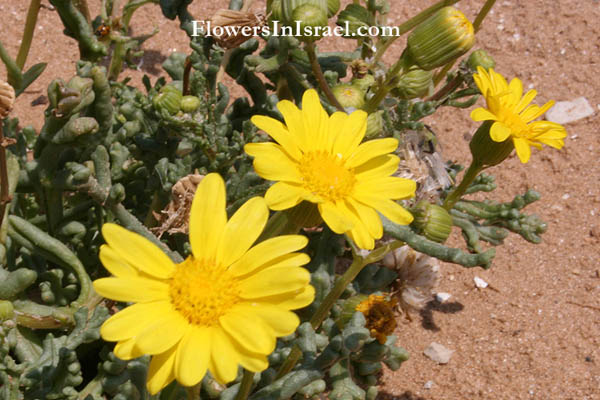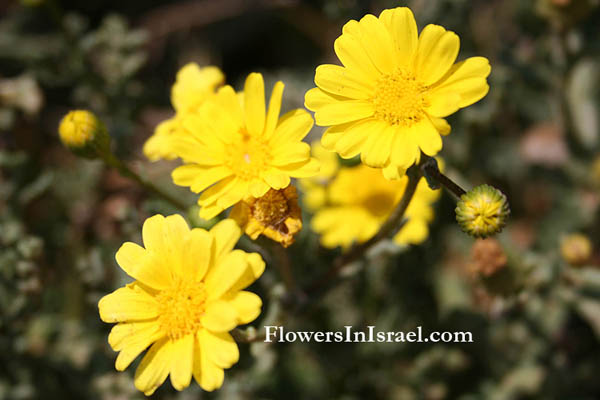Sand chrysanthemum, Sticky oxeye, חרצית דביקה
| Scientific name: | Chrysanthemum viscosum Desf. | |
| Synonym name: | Heteranthemis viscidehirta Schott | |
| Common name: | Sand chrysanthemum, Sticky oxeye | |
| Hebrew name: | חרצית דביקה | |
| Plant Family: | Compositae / Asteraceae, מורכבים |

|
| Life form: | Annual | |
| Stems: | 20-80 cm; erect, few-branched above, sticky-glandular | |
| Leaves: | Alternate, entire, dentate or serrate | |
| Flowers: | Yellow ray flowers 13–21; ligule 2–2.5 cm; many yellow disk flowers | |
| Fruits / pods: | Achenes subterete or obovoid, faintly 5-8-ribbed, glabrous | |
| Flowering Period: | March, April, May | |
| Habitat: | Sand | |
| Distribution: | Mediterranean Woodlands and Shrublands | |
| Chorotype: | Mediterranean | |
| Summer shedding: | Ephemeral |

Derivation of the botanical name: < Chrysanthemum (Plinius), Greek chrysos "gold" and anthemon "flower," referring to the color of the capitula. viscosum, sticky, clammy. Heteranthemis, heteros, ετεροϛ the other, another kind, different; anthemis, chamomile; different Anthemis. viscidehirta, viscos, "sticky;" hirta, "rough, hairy." The hebrew name Charzit, חרצית, from Charutz, חרוץ [Ugaritic cheritz; Canaanite: cheritz; Arabic: churtz (gold earring); charutz is the source of the Greek chrysos (Χρύσος/khrysos): also meaning gold.
|